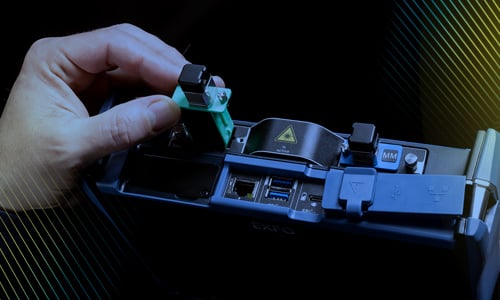SkyRAN helps Tier 1 MNO find unexpected sources of RF interference
With the increasing number of unregulated, inexpensive WiFi devices sprouting up across networks worldwide, RF spectrum is becoming overcrowded and increasingly noisy. Operators are learning it’s time to think outside the box about new sources of interference that may be present across their networks—sources they never even thought to investigate but are having unexpected negative impacts on service delivery.
Why interference matters
Interference comes in many shapes and sizes and can originate from various sources. This in turn can cause severe performance degradation mainly due to increased delay, packet loss, low throughput and signal-to-interference and noise ratios (SNR). As a result, spectral efficiency is degraded and the mobile network is unable to support demanding applications and users with an acceptable quality of service/experience. In addition, interference impacts hardware components and over time may reduce the life expectancy of RAN equipment.
Eliminating narrowband interference
Our customer, a Tier-one mobile network operator (MNO), detected narrowband interference at one of their sites. Based on historical data, they suspected the cause of the interference was a specific type of equipment that was also causing problems at another site. Even though they strongly believed this brand of equipment was the culprit, the MNO wanted to investigate further in order to test their hypothesis and ultimately quickly solve the interference problem.
Don’t rely solely on historical data when hunting for interference
The EXFO team performed interference hunting using EXFO’s fronthaul test solution and determined that the source of interference was two unlicensed UHF monitor systems. These unexpected culprits were causing the interference—not the type of equipment the MNO hypothesized was the source of the problem. What’s more, the team discovered this equipment was impacting nine additional sites.
Together with the onsite team from EXFO, the MNO used OpticalRF, part of SkyRAN our fronthaul remote access and monitoring solution, to collect RF spectrum over CPRI traces from live traffic, both before and after fixing the issue. While analyzing this data after eliminating the narrowband interference, they saw noticeable improvement in multiple KPIs including number of connected users, BER and uplink (UL) throughput speed.
Jump in KPI performance
Using SkyRAN (featuring OpticalRF), we helped this Tier-1 mobile network operator find and fix an unlikely source of narrowband interference. The result?
- Jump in site KPI performance—up to 15% improvement—directly affecting QoS
- Reduction in reactive troubleshooting dispatches
- Better utilization and better coverage of their existing network and sites
Read our case study in its entirety for complete technical details about how we helped our customer realize big gains by finding unexpected sources of interference. Discover how SkyRAN provides quick and easy access to the status of fiber optic infrastructure and RF spectrum, for effective monitoring and troubleshooting anytime and from anywhere.




